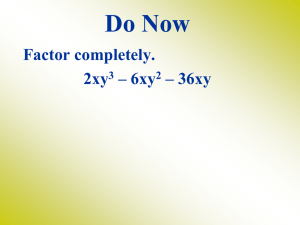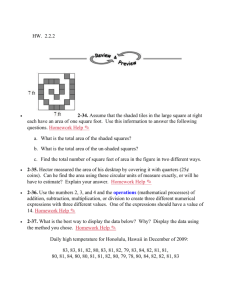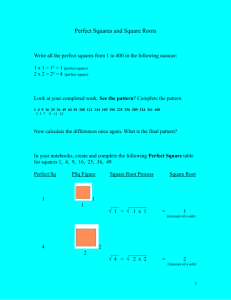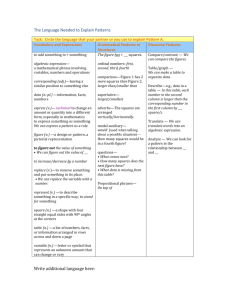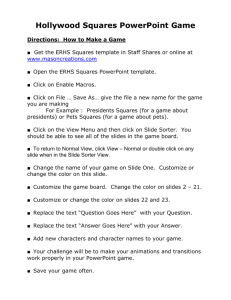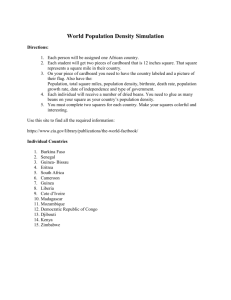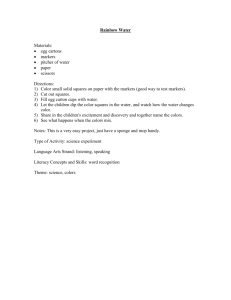How Many Squares Do You See? - Jefferson City Public Schools
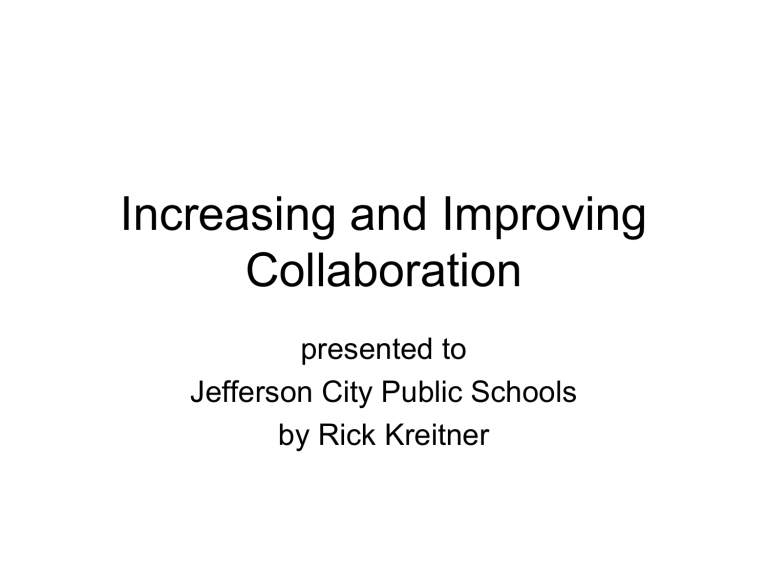
Increasing and Improving
Collaboration
presented to
Jefferson City Public Schools by Rick Kreitner
How Many Squares?
• Look at the image on the screen.
• On your own, count the number of squares you see.
• Write the number on a corner of the handout.
How Many Squares Do You See?
How Many Squares?
At your table, compare numbers and see if you can agree on the correct number.
How Many Squares?
Which results do you like better, yours or your team’s?
Testing Explosion
• 1950’s College Admissions
• 1960’s District-wide Testing
• 1970’s State-wide Testing
• 1980’s National Testing
• 1990’s International Testing
• 2000’s NCLB Every Pupil Test
The Changing Mission of
Schools
• Old mission: To sort and rank students in order to channel them into various segments of our social and economic system (thus creating winners and losers).
• New mission: To guarantee a high level of competence for all (maximize the number of winners).
Do our old school structures support our new school mission?
For over 60 years we developed school buildings, school years, school days, instructional practices, assessment practices, grading practices, etc., to successfully rank and sort students. Can those same structures support us in getting all students to where just the top students got in the past?
Isolation vs. Collaboration
No single educator working in isolation has the ability, time, or resources to get all students to achieve at high levels.
In order to have all students achieve at higher levels, we must work together on a regular basis in a collaborative manner.
Collaborative Teams
• When is a group a team?
• How does a group become a team?
• What does it take to develop a team?
• (turn to handouts at the back of slides)
• Read “Food for Thought” and “Groups vs.
Teams”
• At your table have a discussion about what you have read.
Stages of Team Development
Teams don’t just become teams because we assign them.
- Teams develop with experience.
- There are stages all teams must work through.
- (see handouts behind slides)
Keys to Effective Teams
1. Collaboration is embedded in routine practices of the school.
2. Time for collaboration is built in the school day and school calendar.
3. Teams focus on key questions.
4. Products of collaboration are made explicit.
Keys to Effective Teams (cont.)
5 . Team norms guide collaboration.
6. Teams pursue specific and measurable performance goals.
7. Teams have access to relevant information.
Dimensions of Success
• Effective teams focus across three dimensions:
Relationship
Process
Results
Who
How
What / Why
Relationship
• Team members come from different backgrounds with different experiences and different personalities/styles.
• How might this effect their collaboration?
• (an activity)
Process
• Teams may choose a variety of ways in which to conduct their meetings and their business.
• How might these choices effect their collaboration?
• (see handouts at end of slides)
Results
• Teams are responsible for achieving results.
• How might the results they choose to focus on effect their collaboration?
Focus on Results
What if a sports team …
– hires a coach,
– recruits players,
– distributes a playbook,
– practices,
– scouts the opponent,
– develops a game plan,
– plays the game, but doesn’t pay attention to whether any of these are being done well or, indeed, whether it won or lost the game?
Focus on Results
In order to improve , not only does a team need to focus on its won/lost record, but it must focus on the results of each step taken towards attempting to improve.
Focus on Results
Why have a focus on results in a school?
A focus on results …
is essential to organizational effectiveness.
is essential to the effectiveness of teams.
serves as a powerful motivator.
is essential to continuous improvement.
Learning by Doing, Solution Tree, 2006, pg.
150
Organizational Effectiveness
• Activity-centered vs. results driven
• Without looking at results, you are only “making lunges in the dark” at school improvement
• Focus on achieving specific, measurable goals
• Teachers in gap-closing schools use assessments more often, use data more frequently, and work more collaboratively to analyze and act upon the data than teachers in those schools which are not closing the gap.
Team Effectiveness
• Teams that focus on results are more effective than those that center their work on activities and tasks.
• Teams accomplish the most when they are clear and unambiguous about what they want to achieve, …when they create a scoreboard.
Five-Step Data Team Process
1. Collect and chart data
2. Analyze the results
3. Establish SMART goals
4. Select effective teaching strategies
5. Determine results indicators
Common Formative Assessments, Larry Ainsworth and
Donald Viegut, Corwin Press, 2006, pg
Powerful Motivator
• Incremental gains or “small wins” sustain an improvement initiative.
• Providing evidence of positive results is one of the most effective ways to win the support of resistors.
Continuous Improvement
• NCLB requires all students learn at high levels. Improvement is urgent and must be on-going.
• Traditional schools – get it right once, than just keep doing it. (continuity)
• Innovative schools – get it right, than make it better, and better, and better.
(continuous improvement)
• Timely and frequent feedback is critical.
Focus on Results
• How sharply are you focused on results?
• What results do you want your teams to be focused upon?




